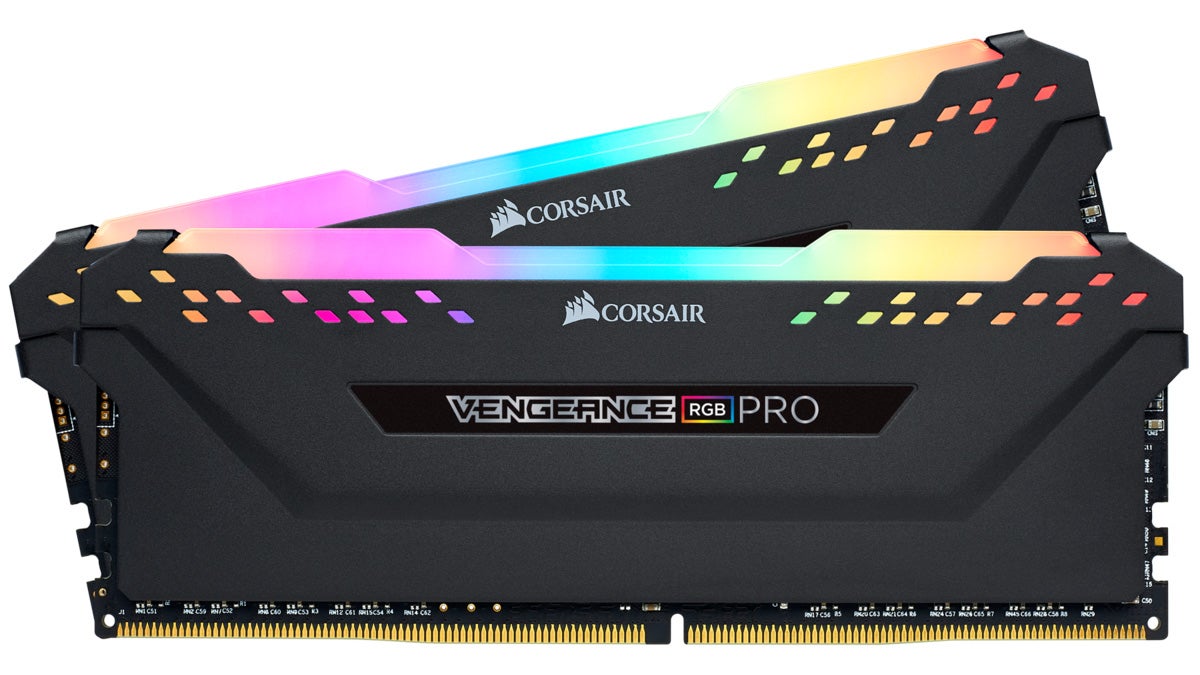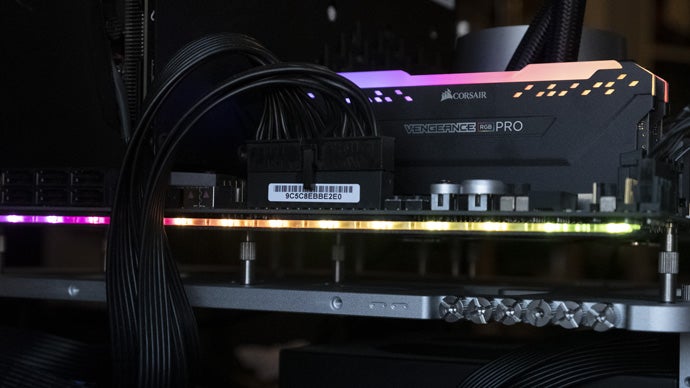Ryzen processors have historically proven more sensitive to RAM speed than their Intel Core counterparts, so we expect to see even greater performance gains from high frequency RAM on our AMD test bed. As in part one, in-game frame-rates are the primary focus here, with three CPU-heavy games tested. We’ve also thrown in some content creation workloads to see whether faster RAM can speed up common tasks like transcoding or rendering. Finally, this article closes out with our guide to purchasing RAM for Ryzen systems, based on our test results. As before, we’ll examine how our high-spec RAM functions with its standard and tightened timings, and we’ve significantly widened the range of frequencies tested too. In our Intel tests, we tested from 3000MHz to 4000MHz in steps of 200MHz, whereas here we’ve tested frequencies from 2133MHz to 4000MHz in steps of 400MHz. That means your particular RAM frequency might not be represented in the results, but you’ll get a much better idea of how lower (and still relatively common) RAM speeds like 2400MHz and 2666MHz can affect both gaming and content creation workloads. We also have a new variable to tweak here, as AMD allows the Infinity Fabric that connects different chip components to be overclocked separately. Normally the fabric clock is tied to RAM speed, eg 3200MHz RAM running with a fabric clock of 1600MHz, but this only holds true up to 3600MHz. We tested higher fabric clocks on relatively low RAM speeds, as well as re-coupling RAM and fabric clock frequencies beyond 3600MHz. As before, we’re using a high-spec £180 Corsair Vengeance RGB Pro DDR4-4000 kit for our testing. The two 8GB sticks that Corsair provided have XMP 2.0 timings of 19-23-23-45 at 1.35V. Under the hood, this kit uses Samsung B-Die memory chips, generally considered to be one of the best performing options available and a popular target for enthusiasts - especially those with Ryzen systems. As the name of this particular kit suggests, the Vengeance RGB Pro also includes individually-addressable RGB lighting, which we’ve left in its default rainbow wave configuration - very soothing. RAM with similar specifications doesn’t have to be £180 though - you can find kits with similar specifications for around $110 or £115, - although you’ll likely need to give up the fancy RGB lighting or the Samsung B-Die to hit that price! We chose the popular Ryzen 7 3700X for our testing, as this is another eight-core, sixteen-thread CPU just like the Core i9 9900K we used in part one. To eliminate run-to-run variance in CPU performance caused by fluctuating load or temperatures, we locked the 3700X to an all-core frequency of 4.2GHz. (This means that the processor will perform slightly worse than it would under its default boost parameters, so don’t compare these results to your own rig’s performance - you’ll likely win even at lower RAM frequencies!) With the Asus Performance Enhancement feature enabled on our ROG Strix B550-F motherboard and an Alphacool Eisbaer Aurora 240mm AiO providing a hefty amount of cooling, we were able to maintain that frequency throughout our testing. Our remaining components will be familiar to anyone that’s read our RAM or processor reviews before - an Nvidia GeForce RTX 2080 Ti graphics card, an XPG S40G 1TB NVMe SSD and a Gamer Storm 850W power supply. Our tests were run on an open air test bench under cool ambient conditions. With our test rig in place and our planned configurations laid out, it’s time to get into the results - starting with our content creation workloads and a key synthetic benchmark. Testing 4000MHz RAM: Are higher frequencies worth it?
Introduction, hardware breakdown, test system [This Page] Content creation benchmarks: Cinebench, Handbrake, AIDA64 Gaming benchmarks: Ashes, Far Cry 5, Crysis 3 Testing 4000MHz RAM: the Digital Foundry verdict

